The compressed gas symbol is a pictogram developed by the Workplace Hazardous Materials Information System. It looks like this:
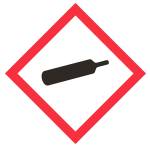
This symbol means that there are gasses under pressure and that you must take necessary precautions.
Read on to learn the types of gasses this most commonly refers to and how to begin working safely with them:
- Compressed Gas Symbol – More Details
- What is Compressed Gas?
- Hazards of Compressed Gases
- How to Work Safely with Compressed Gases
If you are looking for professional health and safety training for your workplace, contact us.
Compressed Gas Symbol
1. Compressed Gas Symbol – More Details
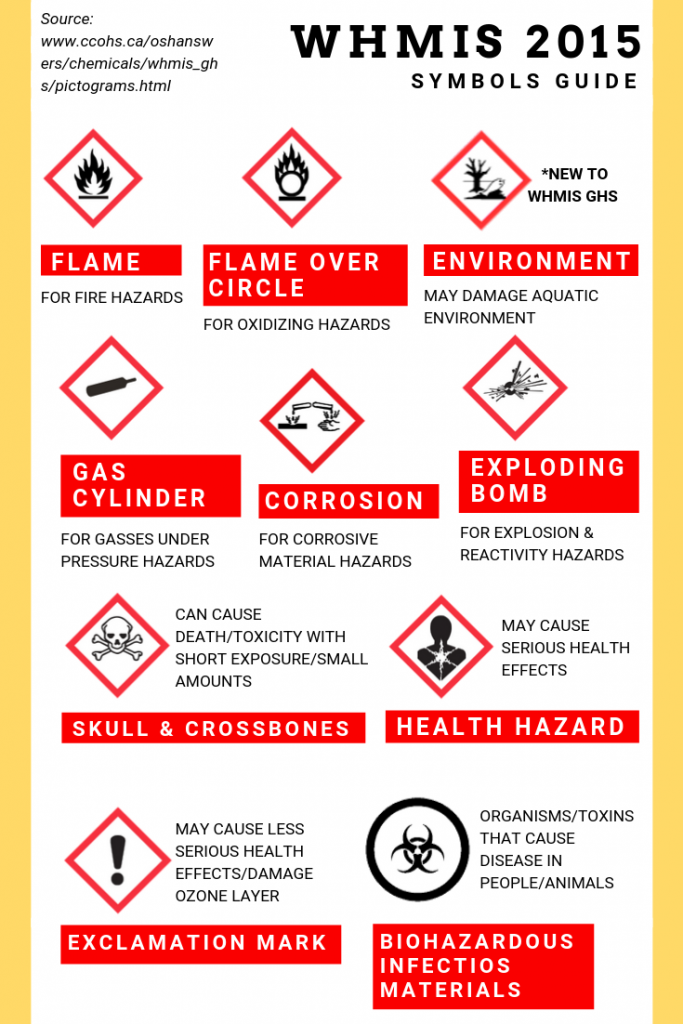
Most of the pictograms used by WHMIS, including the compressed gas symbol, are outlined with a solid red square border.
The compressed gas symbol is one of the pictograms used with WHMIS 2015 hazard classes and categories. WHMIS 2015 is the current version of these symbols. A pictogram is a simple graphic image. When you look at the image, you can immediately recognize which type of hazardous product it represents.
Most of the pictograms used by WHMIS, including the compressed gas symbol, are outlined with a solid red border, shaped like a diamond. Inside of this distinctive border is a black symbol of the potential hazard such as fire, corrosive, or compressed gas). The border and the symbol together make up the pictogram.
You will see the compressed gas cylinder pictogram on a number of classes and categories of gases under pressure including:
The compressed gas symbol looks like a solid black gas cylinder laying on its side.
2. What is Compressed Gas?
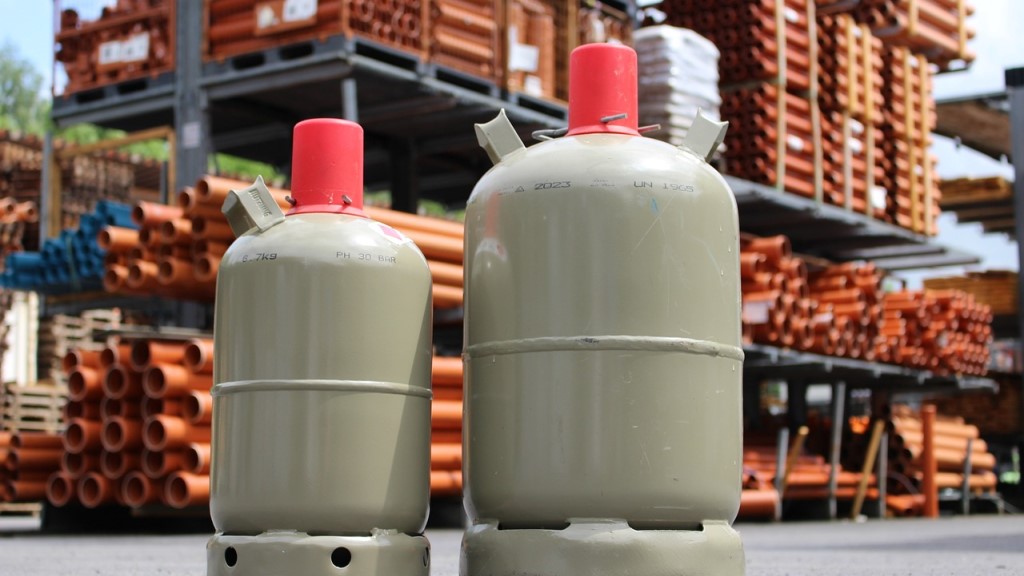
Propane should have a compressed gas symbol on it.
Compressed gases are any type of substance that is contained under pressure and is in a gaseous state at normal room temperature. Compressed gases are usually stored inside a cylinder. A few of the more common compressed gases include:
There are some types of compressed gases such as acetylene, that are stabilized by dissolving them in a liquid or a solid mixture in a cylinder. Acetylene is often used with compressed oxygen to provide fuel for various types of torches.
3. Hazards of Compressed Gases
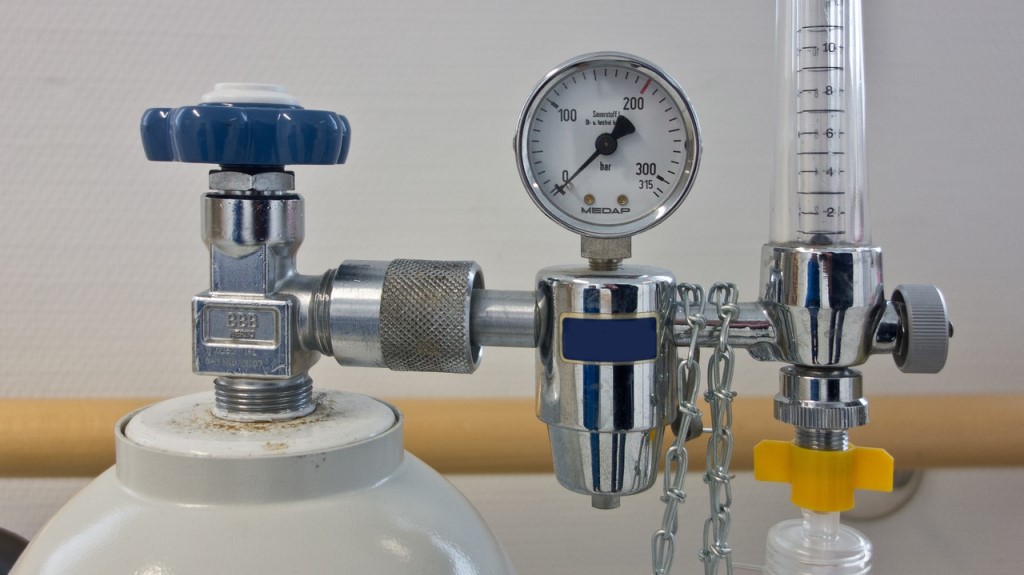
A compressed gas leak could result in suffocation.
Compressed gases pose a number of hazards that you should be aware of.
Risk of Suffocation:
Most compressed gas cylinders hold a significant amount of chemicals. If they develop a leak, the chemicals released from the cylinder can actually displace most of the air in the room. This could lead to suffocation. For example, a single litre of liquid nitrogen alone will turn into 700 litres of nitrogen gas if it is released into a room at room temperature.
Chance of Frostbite and Skin Damage:
Many compressed gases are extremely cold. If they escape from their cylinder and come in contact with your skin, you could get frostbite. If the frostbite is severe enough, then it can cause permanent damage to your skin.
Physical Injuries:
Because of the incredibly high pressure inside of a compressed gas cylinder, if it gets knocked over or damaged and the valve breaks open, the cylinder may rocket or spin out of control. This sudden uncontrolled release of contents can cause significant damage to your surroundings or it can seriously injure you.
Additional Hazards:
If you see a compressed gas symbol on a container, check for other WHMIS hazard symbols as well. Often, compressed gases have other hazards as well. These could include fire, health, and reactivity hazards.
4. How to Work Safely with Compressed Gases

Inspect the cylinders carefully for signs of damage.
There are many industries where you may have to work with compressed gases. These include:
- Healthcare
- Restaurants
- Warehousing
- Manufacturing
- Emergency response
- Transportation
Here are some guidelines to follow if you see a compressed gas symbol on a container.
Inspect Carefully:
If you see a compressed gas symbol, check the cylinder or container carefully for any signs of damage and make sure that it is properly labelled. Make sure that they are not giving off any odours or making a hissing sound.
If you notice a damaged valve, do not open it up. If you notice a leak, make sure that you report it to your supervisor immediately and evacuate the area if necessary.
Look at the MSDS:
Read the Material Safety Data Sheet (MSDS) that was written for the product. Make sure you understand the information given about this hazard and the necessary precautions you should take when using this particular compressed gas.
Store Properly:
Make sure that you properly store the cylinder by securing it to a wall or a rack in an upright position.
Leave the Cap On:
Make sure that you leave the cap of the cylinder in place until it is secured or ready for use.
Use Proper Terms:
You should always refer to the compressed gas by the name that is listed on the supplier label. For example, if the label says “oxygen” do not call it “air.”
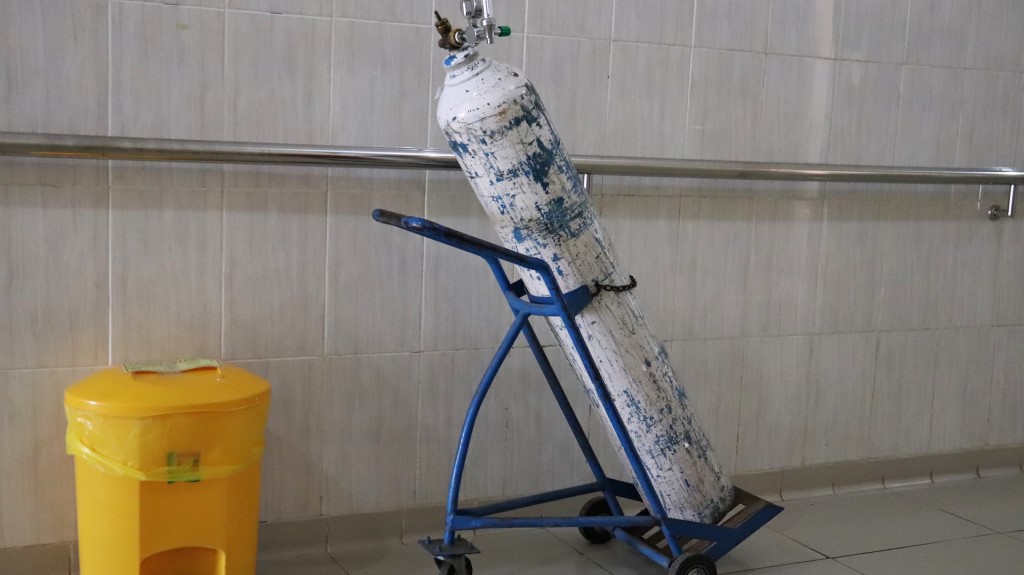
Always be careful when moving a compressed gas cylinder.
Handle and Transport Carefully:
If you need to move the cylinder, use a hand truck or a cart that is specifically designed for moving this type of cylinder. Never drop or bang cylinders against each other. You may also want to have your workers take a training course that will teach them about how to transport dangerous goods safely.
Use Properly:
When you need to use compressed gas, you should do the following:
- Make sure you are in a well-ventilated area
- Make sure you are using a non-sparking ventilation system and equipment
- Only use the minimum amount that you need
- Never used homemade adapters
- Don’t try to force a connection between the cylinder valve and gas handling equipment
In addition, you should always use the appropriate regulator.
Keep Clean:
You should always keep your cylinders and fittings free from from dirt, rust, oil or grease. Never apply any lubricant, jointing compound, or tape to the cylinder valves, fittings, or regulator threads.
Dress Appropriately:
You should always wear insulated gloves to protect your skin from the cold gases. You should never wear rings, watches, bracelets or other types of jewellery when handling compressed gas cylinders. These can freeze to your exposed skin if you get extremely cold gas spilled on you.
Why Choose ACUTE for Your Workplace Health and Safety Training
Hands-on, practical training is the best way to keep employers and workers safe in the workplace! ACUTE is dedicated to workplace safety and understands the importance of course and training provider approval.
Why get workplace safety training with ACUTE?
Here are just some of the benefits of working with ACUTE:
- Open Door Instructor-Student Partnership – ACUTE’s training services emphasize client participation, staff foster relationships with clients, and serve as a touchstone for advice anytime moving forward.
- Serving Your Team and Industry – With a vast array of clients in manufacturing, construction, health, academic, and government sectors, ACUTE brings the best safety practices from across the spectrum to your workplace.
- 100 Years Combined Experience – ACUTE provides comprehensive health and safety training, on-site safety services, and consulting services. With over 100 years of combined experience, our company staff offers more than theoretical or abstract ideas. ACUTE offers solutions!
- Track Record of Success – ACUTE has rated 4.9/5 stars on Google reviews, demonstrating a commitment to our clients, quality, and passion for training.
Hours of Operation
Monday – Friday: 8:00am-5:00pm
Saturday – Sunday: Closed

What Our Customers Are Saying…
Acute is recognized and respected as a people organization and they have been doing it right for a long time.
Acute has been a staple in supporting my companies over the years and have always delivered quality amd dependable service. Training programs are top shelf and a great facility for practical application. couldn’t recomend them more. keep up the great work folks.
We were referred to ACUTE on behalf of our employer for an n95 mask fitting – the staff here are professional, personable, and informative.
I’d come back here for any safety-related training in a heartbeat.

